A few weeks ago i received a ‘Bloggers’ View Invitation’ to visit Power of Making, an exhibition set up by The Crafts Council, one of my favourite organizations in UK, and the Victoria and Albert Museum in London. To make it even more enticing, the email explained that The first 10 bloggers to arrive will receive a free copy of the Power of Making book. Now i had never received an invitation that openly segregated bloggers from journalists but since it offered a tour with the curator and the possibility to meet some of the artists/designers, i chose not to ask myself too many questions. I wasn’t in town on the day of the tour so i asked Nelly Ben Hayoun (a talented Creative Director & Experience Designer whose show Glitch Fiction has just open in Paris) to visit the exhibition for me.
Now I’m going to shut up here and let Nelly tell you what she thought about the Power of Making show:
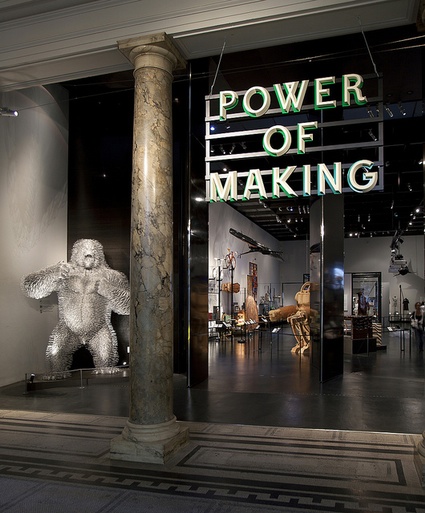 Power of Making © V&A images
Power of Making © V&A images
Power of Making is currently showing at the V&A until 2nd January 2012. The exhibition, curated by Daniel Charny “aims to show how the act of making in its various forms, from human expression to practical problem solving, is shared by all. We hope the exhibition will inspire people and cause them to thoughtfully consider the role of making in their life, in society in commerce and in education.”
Emphasis is put on explaining the various making processes ranging from carving to clicking to checkering to locksmithing or wickerworking, to the public.
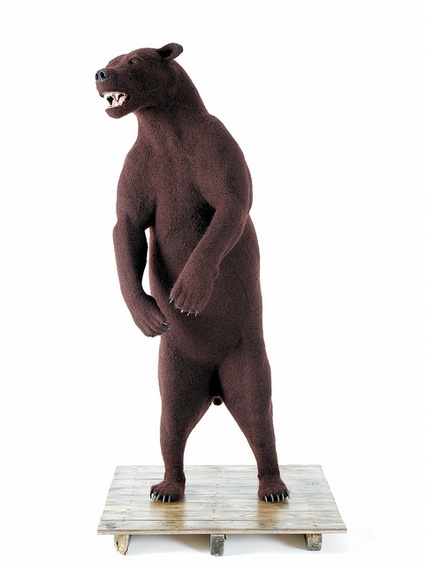 Shauna Richardson, Crochetdermy Bear, 2007 ©Shauna Richardson
Shauna Richardson, Crochetdermy Bear, 2007 ©Shauna Richardson
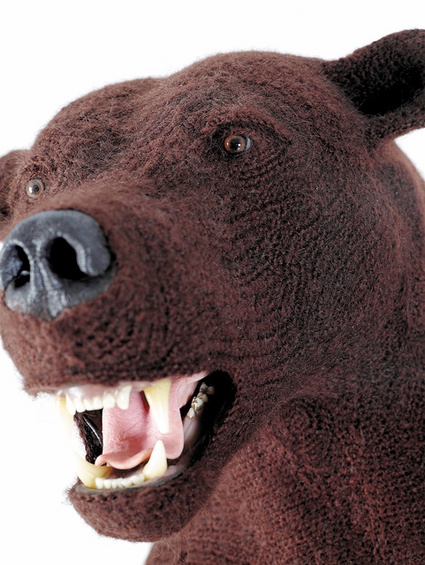 Shauna Richardson, Crochetdermy Bear (detail), 2007 ©Shauna Richardson
Shauna Richardson, Crochetdermy Bear (detail), 2007 ©Shauna Richardson
We navigate over an organized series of cabinets into a grey room finding ourselves in front of life-size crochet bear, lion-shaped Ghanaian coffin, wooden bicycles, glass noses, etc.
The exhibition is inspired by the Power of Ten, Charles and Ray Eames’ film depicting the relative scale of the universe, which is to say according to Daniel Charny that “we should look into the knowledge (the bigger picture) as much as the maker’s skill (detail).”
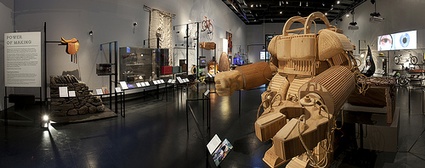 Power of Making © V&A images
Power of Making © V&A images
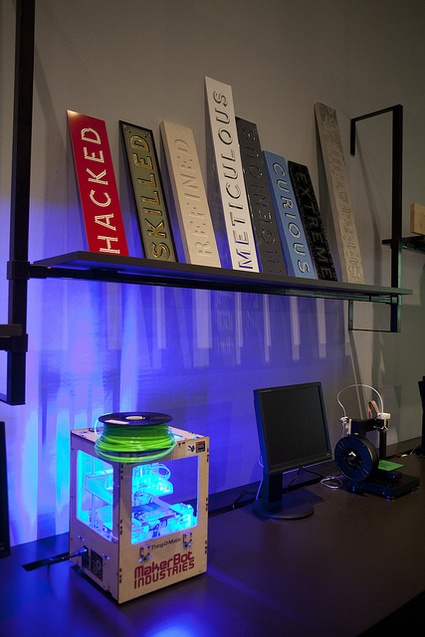 Power of Making © V&A images
Power of Making © V&A images
Daniel Charny wants to speak to ‘people’s curiosity, to change our perception of craft and present us with the contemporary motivation behind making.’ Therefore, makers in the exhibition are not seen through their discipline but through their actual making. “Making can do” the curator told us, so there is no differentiation between professional and amateurs and no mention of the in-between maker community “the Pro-ams“. What is key to Daniel is to present us with a state of imagination at this point in time.
While the exhibition reflects the technicality of making, it barely considers the context of it.
The challenge in presenting the ‘making culture’ resides in the understanding of the context in which the maker make: its community, its peers, its communications tools. Makers do have power and impact and like spiders they have developed ingenious ways in which they can act as a group in order to “hack the post-industrial milieu” as explained by Bruce Sterling. This is not a clean process and it is not always as well defined as the Power of Making exhibition would let you believe. It is, as Sterling calls it, a real “culture of the mashup”.
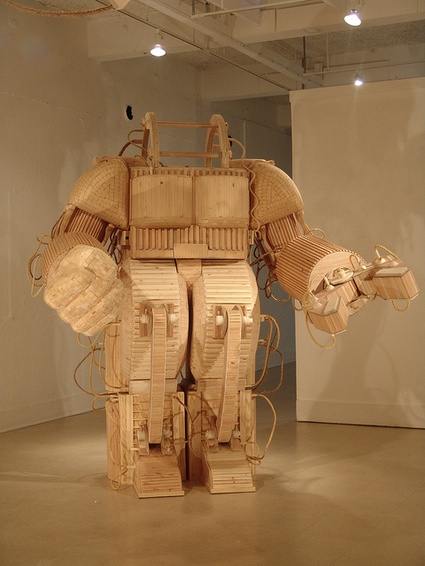 Michael Rea, A Prosthetic Suit for Stephen Hawking with Japanese Steel , 2007 © Contemporary Art Museum Virginia Beach
Michael Rea, A Prosthetic Suit for Stephen Hawking with Japanese Steel , 2007 © Contemporary Art Museum Virginia Beach
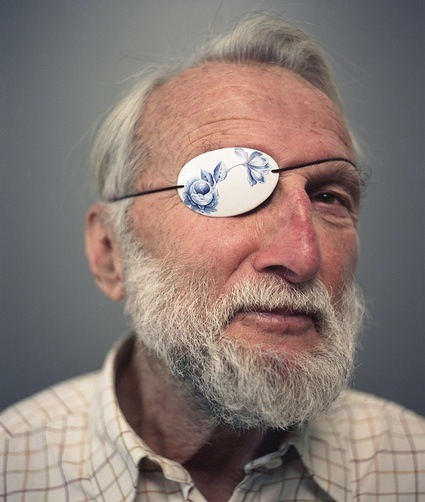 Damian O’Sullivan, Ceramic eye patch © Damian O’Sullivan
Damian O’Sullivan, Ceramic eye patch © Damian O’Sullivan
It is a choice made by Daniel Charny not to show the profession of the makers, the piece must stand out by itself , it is about the making of it and not really about the maker….
But I can’t stop wondering: Which maker(s) are we talking about? Which one(s) have the ‘Power”? Are they the “outsiders”? The “popular” ones? The marginals? The ones who develop “countercultures”? Are they the nerds, geeks, anoraks, enthusiasts, hackers, men in their sheds, bricoleurs, amateurs, hobbyists, “Pro-am”, members of the instructables community, new social hybrids, creators, inventors of all ages and all cultures? Each of them is unique, they all have a different practice of the everyday and they all find their inspirations within it.
Another point i’d like to raise is that one of the differences between a professional maker and a pro-am or amateur is that the amateur ‘makes’ during his leisure time. Pro-ams have changed dramatically the consumer framework. Nowadays, we now not only speak about leisure as a time where the “modern man” can relax but we actually speak of a real economy. Leisure produces specific products and services. Passionate makers enjoy “leisure activities”.
Once again, this issue seems to be a curatorial challenge, how do you represent the time of making in an exhibition?
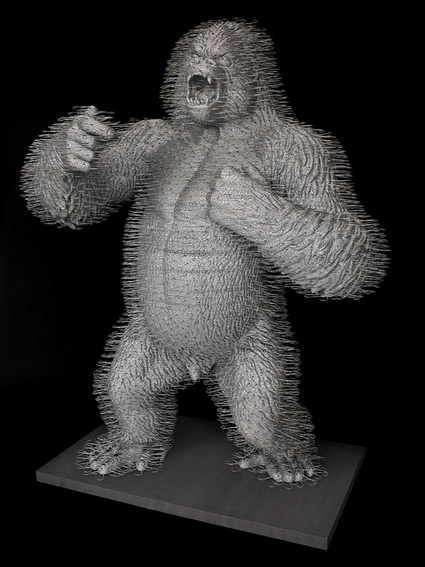 David Mach RA, ‘King Silver’ gorilla sculpture, 2011 ©Private Collection, photographer Richard Riddick thedpc.com
David Mach RA, ‘King Silver’ gorilla sculpture, 2011 ©Private Collection, photographer Richard Riddick thedpc.com
Another qualm for me is that although the exhibition does present us with the technicality behind the making, it doesn’t give us a view on the process of it. When looking at David Mach‘s King silver Gorilla Sculpture I would like to see how these coat hangers have been put together, I would like to feel the pain, the mess or clean aspect of making such a work.
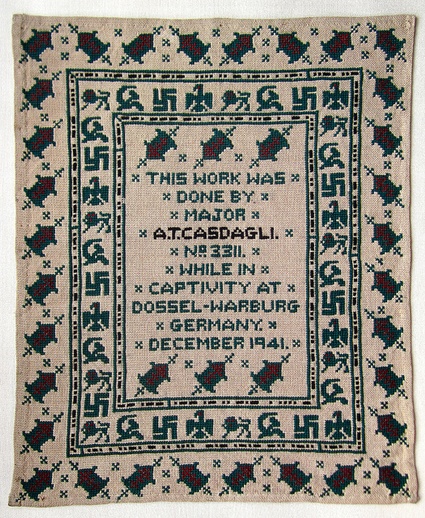 Major A. T. Casdagli RAOC, ‘God Save the King, F*** Hitler’ ,1941 ©Captain A. T. Casdagli
Major A. T. Casdagli RAOC, ‘God Save the King, F*** Hitler’ ,1941 ©Captain A. T. Casdagli
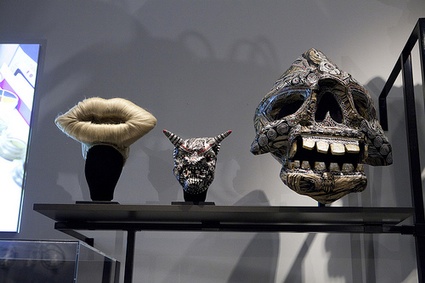 Power of Making © V&A images
Power of Making © V&A images
Funnily enough, before arriving to the “Power of Making” exhibition, I was reading about Bourdieu and his The forms of Capital. Bourdieu is one of the first French academics to have proclaimed the power and the creativity of the popular culture in the 80’s. Under the name of “counter-cultures” Bourdieu studied the variety of outsider practice. He differentiated three kinds of capital that the individual experiences in his life, “economic capital”, “social capital” which is based on the network, relationship, membership we are enable to create. And then “cultural capital” which is about the knowledge, skills, education that you have and that can give you higher status. Indeed cultural capital is what makes the difference between an amateur-maker and a usual consumer, by making the amateur is increasing his cultural capital.
How to make? When? And what is the learning process? These are three aspects I would have liked to see being explored in the exhibition.
I expected to see the making of the future revolution, the power and the people behind it! What I saw was the craft and technicality of it. But I guess this is the way to do it, first think through the tools and then get the Bastille!?
To conclude, i’d say that Power of Making is a highly recommended exhibition on the techniques behind making. And good job Daniel! You got me going on the topic!
The Power of Making is currently showing at the Victoria and Albert Museum in London until 2nd January 2012. Admission free.
